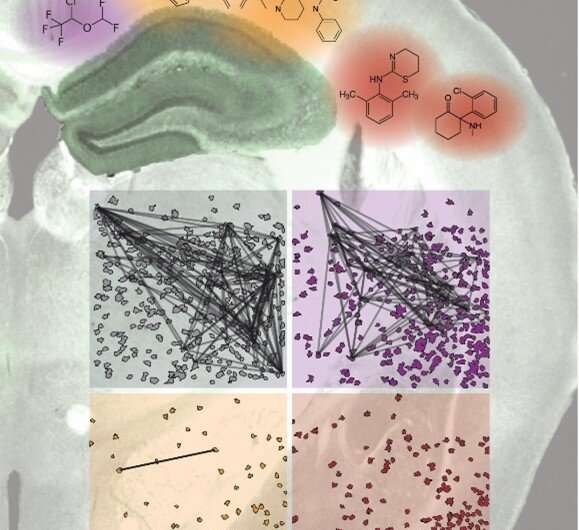
Memory loss is common after general anesthesia, particularly for events occurring immediately before surgery—a phenomenon called retrograde amnesia. But a new study publishing on April 1st 2021 in the open access journal PLOS Biology, led by Simon Wiegert at the University Medical Center Hamburg-Eppendorf in Germany, shows that changes in the hippocampus—the part of the brain used to make new memories—differ depending on which general anesthetic is used. Consequently, their effects on memory formation also differ.
Understanding how different anesthetics affect the brain, particularly the hippocampus, is therefore important for both clinicians with human patients and experimental scientists who work with animals. Wiegert and his team recorded brain activity from the hippocampus while mice were anesthetized using one of three common combinations of general anesthetics: isoflurane, ketamine/xylazine (Keta/Xyl), and medetomidine/midazolam/fentanyl (MMF). Brain activity was recorded electrically and by optically imaging calcium flow—a dynamic signal indirectly reflecting neuronal activity and a trigger that allows brain cells to pass signals to each other.
Both recording methods showed that each drug changed brain activity in the hippocampus compared to wakefulness or natural sleep. The researchers found a number of differences in how the specific anesthetics affected the brain. For example, Keta/Xyl strongly reduced overall calcium activity, while MMF affected its rate much more than the duration. Furthermore, all anesthetics affected the stability of synaptic connections between brain cells in the hippocampus. Keta/Xyl disturbed synaptic stability most drastically, reflecting its strong disturbances of neuronal calcium activity. Recovery time also differed; brain activity returned to normal in about 45 minutes after isoflurane anesthesia, but it took close to 6 hours for the other two drugs. Similarly, the mice showed signs of retrograde amnesia after both Keta/Xyl and MMF anesthesia. But after isoflurane anesthesia—the condition, which showed the mildest disturbances compared to natural sleep—they could still remember what they had learned before the surgery. Knowing these varying effects on the hippocampus and memory formation should be useful for doctors or experimenters when considering which method to use.
Source: Read Full Article
